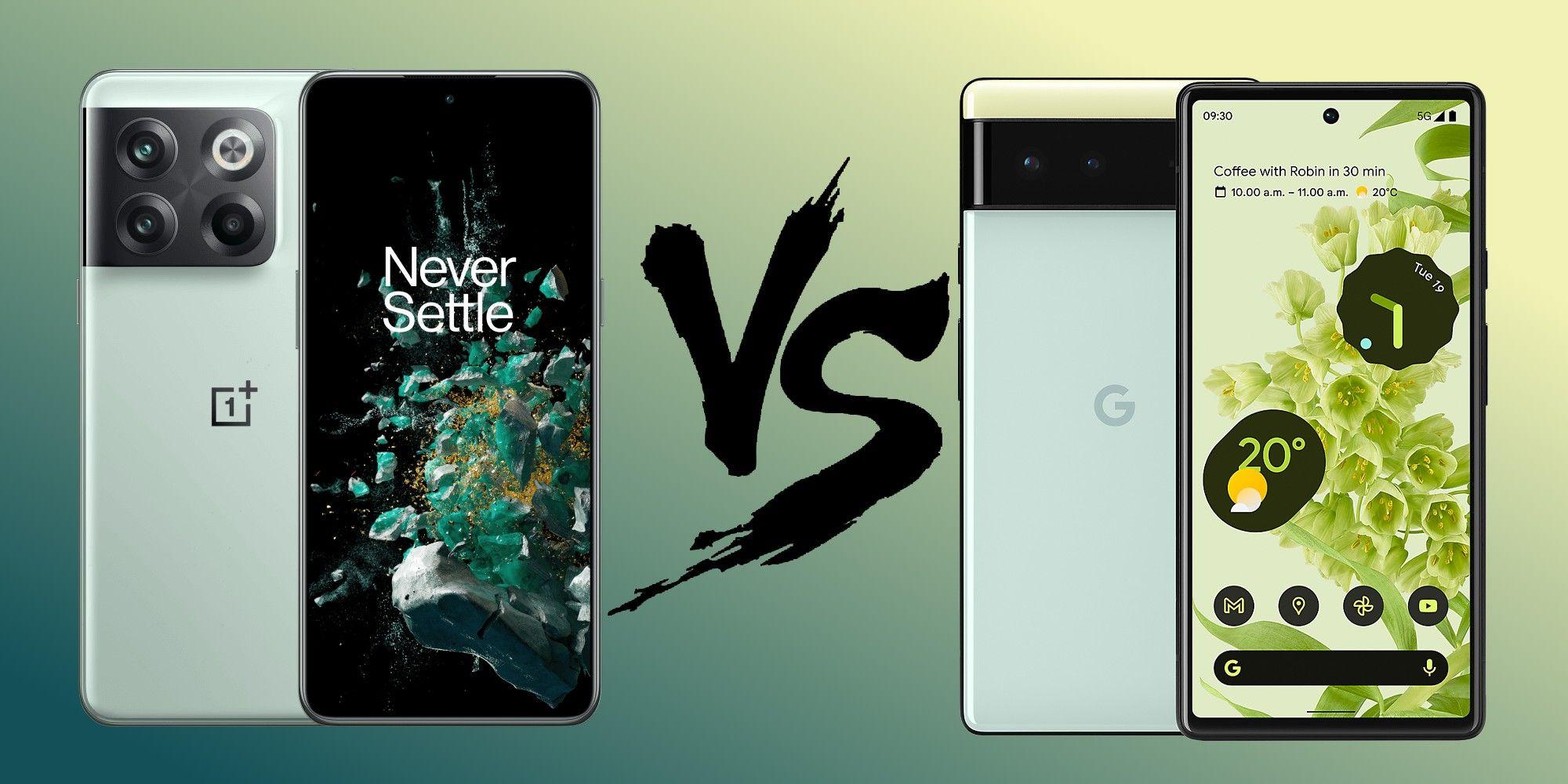Is there anything about the OnePlus 10T that should persuade you to choose it over the Pixel 7 after using them side by side for a day?
The Same Performance, But With Different Software

The Qualcomm Snapdragon 8+ Gen 1 engine. Which powers the OnePlus 10T, is arguably the greatest processor currently on the market and offers a staggering amount of performance and efficiency. Speed and power are not at all a problem after 30 minutes of playing Asphalt 9: Legends. Playing the game requires the same degree of performance from both the Pixel 7 and the Tensor G2 CPU. Both of which are typically fluid and enjoyable to use.
In spite of the fact that the OnePlus 10T’s 120Hz refresh rate is higher than the Pixel 7’s 90Hz. I also don’t really notice much of a difference between the two panels. Both of them are top-tier multimedia phones because of their similar pixel density and resolution. If you look closely, there are only very little variations. With the Pixel 7 seeming somewhat brighter and with a marginally more pleasing tone. However, the Pixel 7’s speakers are better, with greater clarity and less distortion.
We now reach a significant distinction: the software. The clean, hassle-free Android installation on the Pixel 7 is a world away from the OnePlus phone’s OxygenOS 12. Which is based on Android 12 but is more difficult to use and obtrusive. The menus and navigation on the Pixel 7 are fluid and straightforward. Which is absent from the less user-friendly and more frustrating OnePlus 10T. It’s surprising that the 10T doesn’t already have Android 13, even if it’s apparently on the way.
Also: Battle of the Flagships: Galaxy S22 vs. Pixel 6 Pro
When I go to pick up one of the two phones to check Twitter or a Teams message. I tend to reach for the Pixel 7. The animations are better, the programme feels more contemporary, and it’s generally a little faster. Performance isn’t a concern because they both play games in the same way. But the Pixel 7’s software makes it by far the more pleasant daily companion.
Camera Quality Isn’t Even Comparable
Both devices have 50-megapixel primary cameras, however the Pixel 7’s wide-angle camera is 12 MP. While the OnePlus 10T’s is only 8 MP, and the 10T’s 2 MP macro camera is hardly worth mentioning. The two primary cameras have extremely distinct technical characteristics. But the best way to appreciate them is to look at the pictures they capture because they are very diverse.
The OnePlus 10T can’t hope to match the realism of the Pixel 7’s camera, which is just outstanding. The colours, shadows, and tone of the main camera are stunning. But the OnePlus phone focuses on increasing saturation to make its photographs stand out. A much more sophisticated and aesthetically beautiful method of accomplishing the same thing is the HDR effect on the Pixel 7 and the way it balances shade and detail.
When using the wide-angle camera, the distinctions become even more obvious. The 8MP camera on the OnePlus 10T avoids detail like it’s poisonous, and when you dare zoom in, the pictures are distorted and poor quality. The wide-angle camera of the Pixel 7 is far superior, with lots of detail and crispness. When it comes to the cameras on the two phones, the Google Pixel 7 is by far the superior device.
The Importance Of Good Design
Even when compared to the Pixel 7, the OnePlus 10T’s appearance has never been an issue. The 10T’s design is appropriately reminiscent of the superior OnePlus 10 Pro and incorporates elements of Oppo’s cutting-edge production methods. Very appealing and taken directly from the Oppo Find X5 Pro is the way the camera module integrates into the back panel. It’s a stylish phone.
In contrast to the metal chassis and high-gloss rear panel of the Pixel 7. The plastic chassis, however, looks and feels cheap.
The Pixel 7 is gorgeous to look at even in dull black, and the visor-like camera module is equally as distinctive a design element as the camera module on the 10T. The two phones also have different shapes, with the Pixel 7 seeming more costly and contemporary while the taller OnePlus phone is simpler to use with one hand.
The fingerprint reader and face unlock on the OnePlus 10T are faster, and more importantly, so is the charging speed. The OnePlus 10T’s battery charges to 100% in 20 minutes when connected to the supplied charger; the Pixel 7 requires more than three times as long. I enjoy the OnePlus 10T’s design and feel, but it can’t compete with the charging speed of the Pixel 7, which is the primary (and only) factor in someone choosing it over the Pixel 7.
Price Is The Ultimate Benefit Of The Pixel 7
The Pixel 7 starts at $600, or 599 British pounds, while the lowest OnePlus 10T costs $650, or 630 British pounds. I won’t sugarcoat it: if you’re trying to decide between these two phones, you should definitely choose the less expensive Pixel 7. When using them side by side, it becomes clear how drastically different the two phones are and how much the OnePlus 10T is a step backward for the company.
Is there anything redeeming about the 10T? Fast charging is a valid reason to purchase a OnePlus phone, but not the 10T because the charging speed of the 10 Pro, which is a superior phone overall, is essentially the same. Additionally, the Snapdragon 8+ Gen 1 is highly powerful, and the phone is reasonably priced. The 10T has a lot of wonderful features, but the fundamentals—from the construction materials to the software usability—let it down.

Leave a Reply